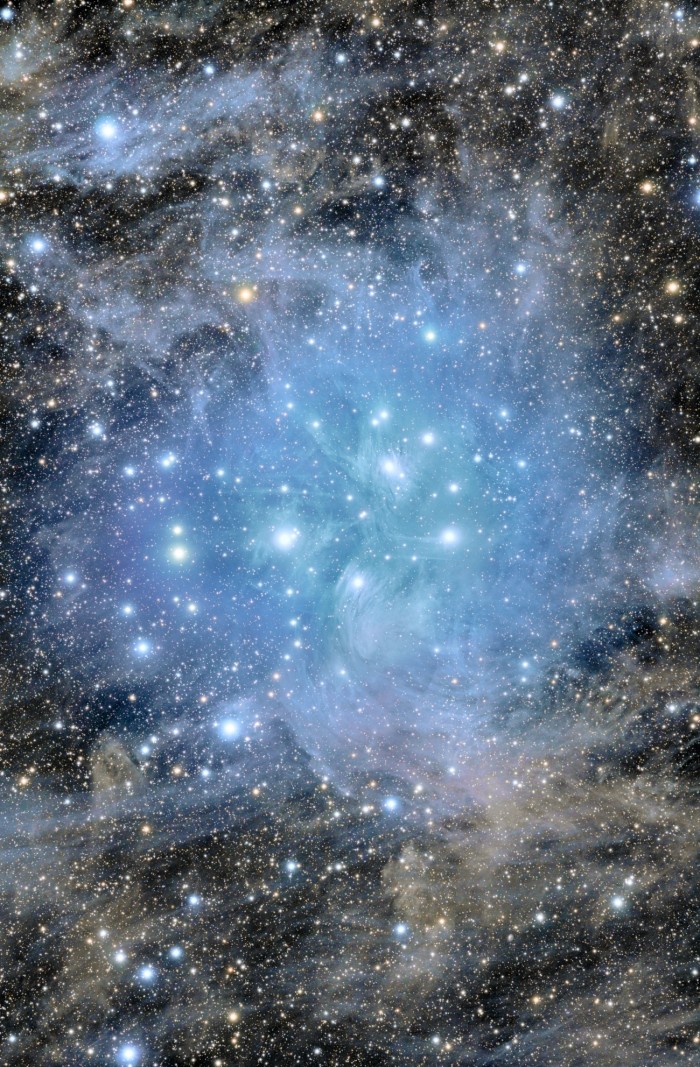Sun Circle
Seen from Hai Duong, Vietnam, the bright sun sports a rainbow-colored halo in a picture taken September 17.
The circle of color is an optical effect created as ice crystals in high-altitude clouds refract, or bend, light. Because the upper reaches of Earth’s atmosphere are almost always below freezing, sun halos and related phenomena—such as sun dogs and pillars—can be seen year-round, according to NASA.
Photograph by Tho Le Duc via National Geographic
Getting Rich From Science
Randall Munroe has something to say about the faster-than-light particle breakthrough:

Extraordinary claims require extraordinary evidence.
via xkcd
If Planets Were As Far Away As the Moon
How would Mars, Earth, Neptune and Jupiter look if they were the same distance from Earth as the Moon?
Jupiter would be a little intimidating.
CERN Measures Particle Travelling Faster Than Light
If this is true, it looks like we’re one step closer to that unified model of physics, and to understanding the ever-more-intriguing universe we live in. It also means that Eureka—the TV series in which the current plot is all about a spaceship with an FTL drive—is eerily accurate.
GENEVA (AP) — The readings have so astounded researchers that they are asking others to independently verify the measurements before claiming an actual discovery.
“This would be such a sensational discovery if it were true that one has to treat it extremely carefully,” said John Ellis, a theoretical physicist at the European Organization for Nuclear Research, or CERN, who was not involved in the experiment.
Nothing is supposed to move faster than light, at least according to Albert Einstein’s special theory of relativity: The famous E (equals) mc2 equation. That stands for energy equals mass times the speed of light squared.
But neutrinos - one of the strangest well-known particles in physics - have now been observed smashing past this cosmic speed barrier of 186,282 miles per second (299,792 kilometers).
CERN says a neutrino beam fired from a particle accelerator near Geneva to a lab 454 miles (730 kilometers) away in Italy traveled 60 nanoseconds faster than the speed of light. Scientists calculated the margin of error at just 10 nanoseconds, making the difference statistically significant. But given the enormity of the find, they still spent months checking and rechecking their results to make sure there was no flaws in the experiment.
The CERN researchers are now looking to the United States and Japan to confirm the results.
more/via: AP
Pleiades Deep Field
From NASA APOD:
Have you ever seen the Pleiades star cluster? Even if you have, you probably have never seen it like this: all dusty. Perhaps the most famous star cluster on the sky, the bright stars of the Pleiades can be seen without binoculars from even the depths of a light-polluted city. With a long exposure from a dark location, though, the dust cloud surrounding the Pleiades star cluster becomes very evident. The above exposure took about 30 hours and covers a sky area several times the size of the full moon. Also known as the Seven Sisters and M45, the Pleiades lies about 400 light years away toward the constellation of the Bull (Taurus). A common legend with a modern twist is that one of the brighter stars faded since the cluster was named, leaving only six stars visible to the unaided eye. The actual number of Pleiades stars visible, however, may be more or less than seven, depending on the darkness of the surrounding sky and the clarity of the observer’s eyesight.

